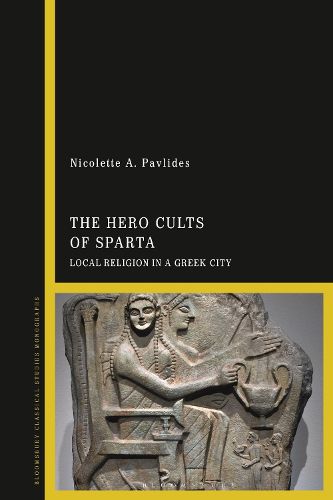Readings Newsletter
Become a Readings Member to make your shopping experience even easier.
Sign in or sign up for free!
You’re not far away from qualifying for FREE standard shipping within Australia
You’ve qualified for FREE standard shipping within Australia
The cart is loading…






This book examines the hero-cults of Sparta on the basis of the archaeological and literary sources. Nicolette Pavlides explores the local idiosyncrasies of a pan-Hellenic phenomenon, which itself can help us understand the place and function of heroes in Greek religion. Although it has long been noted that hero-cult was especially popular in Sparta, there is little known about the cults, both in terms of material evidence and the historical context for their popularity. The evidence from the cult of Helen and Menelaos at the Menelaion, the worship of Agamemnon and Alexandra/Kassandra, the Dioskouroi, and others who remain anonymous to us, is viewed as a local phenomenon reflective of the developing communal and social consciousness of the polis.
What is more, through an analysis of the typology of cults, it is concluded that in Sparta, the boundaries of the divine/heroic/mortal were fluid, which allowed a great variation in the expression of cults. The votive patterns, topography, and architectural evidence permit an analysis of the kinds of offerings to hero-cults and an evaluation of the architecture that housed such cults. Due to the material and spatial distribution of the votive deposits, it is argued that Sparta had a large number of hero shrines scattered throughout the polis, which attests to an enthusiastic and long-lasting local votive practice at a popular level.
$9.00 standard shipping within Australia
FREE standard shipping within Australia for orders over $100.00
Express & International shipping calculated at checkout
This book examines the hero-cults of Sparta on the basis of the archaeological and literary sources. Nicolette Pavlides explores the local idiosyncrasies of a pan-Hellenic phenomenon, which itself can help us understand the place and function of heroes in Greek religion. Although it has long been noted that hero-cult was especially popular in Sparta, there is little known about the cults, both in terms of material evidence and the historical context for their popularity. The evidence from the cult of Helen and Menelaos at the Menelaion, the worship of Agamemnon and Alexandra/Kassandra, the Dioskouroi, and others who remain anonymous to us, is viewed as a local phenomenon reflective of the developing communal and social consciousness of the polis.
What is more, through an analysis of the typology of cults, it is concluded that in Sparta, the boundaries of the divine/heroic/mortal were fluid, which allowed a great variation in the expression of cults. The votive patterns, topography, and architectural evidence permit an analysis of the kinds of offerings to hero-cults and an evaluation of the architecture that housed such cults. Due to the material and spatial distribution of the votive deposits, it is argued that Sparta had a large number of hero shrines scattered throughout the polis, which attests to an enthusiastic and long-lasting local votive practice at a popular level.